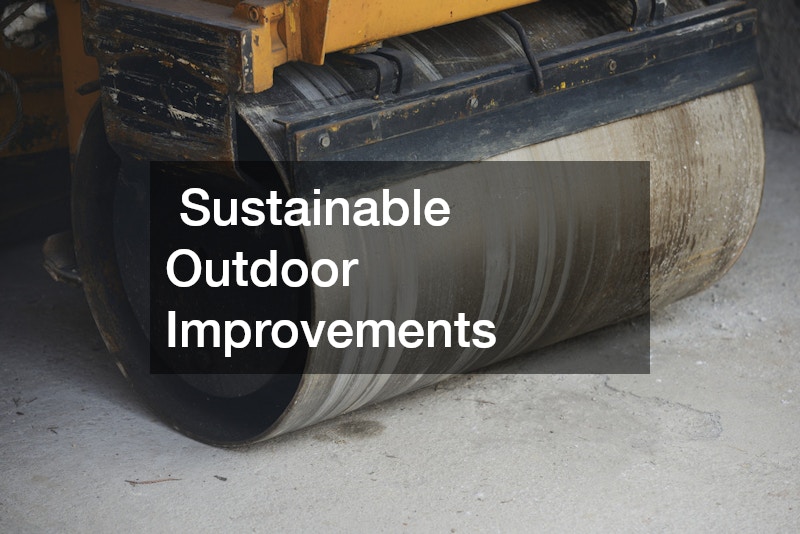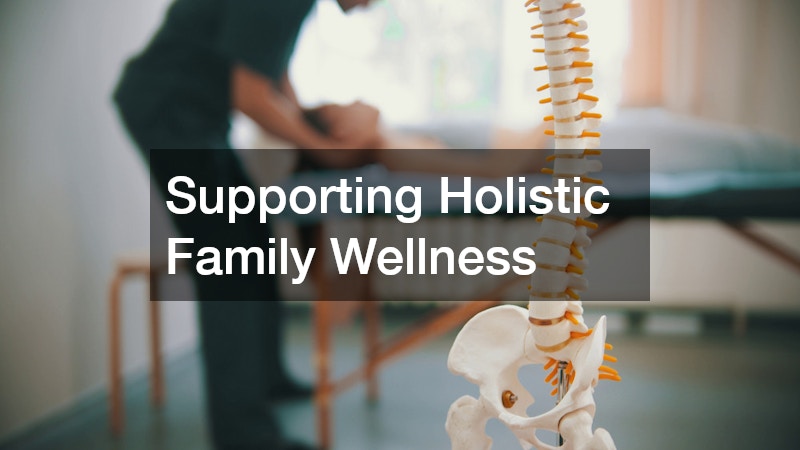Sustainability often feels like a lofty, overwhelming goal—something reserved for large corporations, environmental organizations, or people living entirely off the grid. But in reality, it’s something that can be woven into your everyday life, often without requiring major lifestyle overhauls. Personal sustainability is about the small choices you make daily that collectively have a significant impact over time. These can range from how you shop and the products you choose, to how you manage resources like water, electricity, and even your time.
The good news is that the journey doesn’t have to feel like an uphill climb. You don’t have to be perfect, and you don’t have to do everything all at once. The most effective changes often come from simple adjustments that fit seamlessly into your current routines. Whether it’s being more conscious of your energy usage, reducing waste in creative ways, or finding alternatives to disposable products, each shift builds toward a more mindful and sustainable lifestyle.
This approach is also deeply personal. While there are universal principles for living sustainably, each person’s path looks different depending on their values, habits, and resources. That’s why it’s helpful to explore different areas of life where you can make changes that feel natural to you. This guide will walk you through practical, easy-to-adopt strategies that fit into everyday moments—whether you’re at home, at work, or out in your community. By focusing on approachable actions rather than rigid rules, you can start building habits that last, creating a lifestyle where personal sustainability becomes second nature.
The great thing about these strategies is that they often overlap. One small change can have benefits in multiple areas. For example, conserving water not only reduces your utility bills but also decreases the energy needed to treat and pump that water. Choosing reusable products can keep waste out of landfills while saving you money over time. With each step, you’ll notice a growing awareness of how interconnected daily habits really are—and that awareness is the foundation of a sustainable lifestyle.
1. Rethinking Daily Care Habits

Visiting a local dentist may not seem connected to personal sustainability at first, but oral health impacts more than just your smile—it affects your overall wellness, which in turn can reduce medical waste and resource usage. Preventive care means fewer interventions, less reliance on single-use dental materials, and fewer trips that consume energy and fuel. Choosing a provider who prioritizes eco-conscious practices, like using digital records instead of paper, can amplify the effect.
Small steps, such as using biodegradable floss and bamboo toothbrushes, can also make a difference in your personal sustainability journey. Many dental offices are now incorporating compostable rinse cups and recyclable packaging for patient giveaways. At home, you can extend these habits by choosing toothpaste tablets in glass jars instead of tubes that are difficult to recycle. Thinking about health in sustainable terms reminds us that every choice, even something as routine as dental visits, can support a lifestyle that values both well-being and the environment. By approaching oral care as part of a bigger picture, you start to see how maintaining your health directly supports the planet’s health too. Over time, these small preventive measures can add up to a meaningful reduction in your environmental footprint.
2. Energy-Conscious Self-Care
High-tech skin treatments like emface can be integrated into a personal sustainability mindset when you choose providers who use energy-efficient equipment and low-waste protocols. While beauty and wellness services may seem unrelated to environmental goals, the way these services are delivered matters.
For example, opting for treatments in facilities that use LED lighting, conserve water, and source products with sustainable ingredients helps reduce the overall footprint. These providers may also offer refillable product programs, minimizing packaging waste. Pairing high-quality care with mindful choices extends beyond the appointment—maintaining results with minimal-waste products at home further supports your commitment to personal sustainability.
You might even find that these small, mindful decisions lead to better outcomes. High-quality, sustainably sourced products are often gentler on the skin, and energy-efficient devices can be more precise, reducing the need for repeated treatments. By viewing self-care as eco-care, your investment benefits both your personal confidence and the environment. This mindset shift ensures that the ways you nurture yourself align with the ways you nurture the planet.
3. Extending the Life of Home Furnishings
Rug cleaning services not only preserve the beauty of your home but also align with personal sustainability by extending the lifespan of your décor. Instead of replacing worn rugs—which adds to landfill waste and increases manufacturing demand—professional cleaning restores their look and feel.
Using eco-friendly cleaning methods, such as plant-based detergents and water-conserving systems, makes the process even more sustainable. Some services also use low-moisture techniques, which reduce drying time and energy usage. By caring for what you already own, you reduce your consumption and reliance on new products, which in turn minimizes your environmental impact.
This practice also helps you maintain a healthier indoor environment. Clean rugs trap less dust and allergens, improving air quality without the need for chemical-heavy sprays or air purifiers. Home care is a significant part of personal sustainability, and investing in the longevity of your furnishings is a simple yet effective step. It proves that sustainability doesn’t always mean buying something new—it can mean loving and caring for what you already have, choosing restoration over replacement whenever possible.
4. Sustainable Outdoor Improvements

When upgrading driveways or pathways, partnering with paving services that use recycled materials or low-energy production methods supports your personal sustainability goals. Traditional paving often consumes a lot of resources and energy, but newer techniques use reclaimed asphalt, permeable surfaces for better water management, and local sourcing to reduce transportation emissions.
By choosing materials that are durable and weather-resistant, you reduce the need for frequent repairs or replacements. This not only saves money but also reduces waste from construction debris. Permeable paving can also play a role in managing stormwater, helping reduce runoff that carries pollutants into local waterways.
Outdoor improvements can add beauty and function to your property while also helping you live in a way that respects the planet. The right choices can even make your home more energy efficient—lighter-colored surfaces reflect heat, keeping the surrounding area cooler in summer and reducing your reliance on air conditioning. It’s a great reminder that sustainability and functionality can work hand in hand.
5. Reducing Energy Waste at Home
An electrician company can be a surprising ally in your personal sustainability efforts. Beyond basic wiring, electricians can help install energy-efficient lighting, smart home systems, and solar connections that significantly reduce your energy consumption.
Upgrading outdated systems to modern, efficient options can cut your electricity use by a substantial margin. Smart thermostats can automatically adjust heating and cooling based on your schedule, while motion-sensor lighting ensures that energy isn’t wasted in unused rooms. Solar panel integration can further reduce your reliance on non-renewable energy sources.
These changes have both immediate and long-term benefits, lowering utility costs while decreasing your environmental footprint. Partnering with professionals who understand sustainable energy solutions can transform your home into a more efficient and eco-friendly space. It’s a reminder that sometimes the best way to protect the planet is to start with the systems that keep your home running every day.
6. Preserving Memories Sustainably
Custom picture framing can be done in ways that align with personal sustainability by selecting frames made from reclaimed wood, recycled metals, or sustainably sourced materials. The art of framing doesn’t have to come at the expense of the environment—choosing low-VOC finishes and avoiding plastic-based components reduces your impact.
Supporting local artisans also cuts down on shipping emissions while contributing to your community’s economy. Many small framing shops are willing to work with you on selecting materials that align with your environmental values without sacrificing quality or style. Even the matting and backing materials can be chosen with sustainability in mind, opting for acid-free, recycled paper products.
Preserving memories in a way that honors both sentiment and sustainability ensures that your cherished items have a positive impact beyond their visual beauty. This approach connects your personal history to a larger story of environmental responsibility, creating keepsakes that truly stand the test of time.
7. Making Beauty Choices More Mindful

Opting for local laser treatments at clinics that prioritize eco-conscious practices is another way to connect personal sustainability with self-care. These providers may use energy-efficient equipment, recyclable protective gear, and responsibly sourced skincare products. Choosing local services also reduces travel-related emissions compared to visiting distant locations.
Some clinics are even implementing waste separation systems and switching to reusable textiles where safe and feasible. As a client, you can support these practices by asking questions about a provider’s sustainability measures and choosing those that align with your values.
By considering the environmental impact of beauty treatments, you can enjoy their benefits while supporting practices that respect the planet. This shows that sustainability isn’t limited to traditionally “green” industries—it can be embraced in all aspects of modern life.
8. Supporting Education in Wellness
Attending a massage school that incorporates sustainable practices can deepen your understanding of wellness while promoting personal sustainability. Such institutions may focus on plant-based oils, reusable linens, and water conservation in their training. Learning in an environment that values sustainability encourages students to bring those principles into their professional work, multiplying the positive impact.
Graduates who adopt these values often pass them on to clients, influencing others to consider eco-friendly wellness practices. This ripple effect extends far beyond the classroom, reaching into communities and households. Supporting schools that embed sustainability into their programs is an investment not only in personal growth but also in the health of the planet.
9. Thoughtful Approaches to Cosmetic Enhancements
Injectables are a popular cosmetic option, but they can also be approached through the lens of personal sustainability by working with practitioners who minimize single-use items where safe and possible, and source from companies with strong environmental ethics. Additionally, choosing treatments locally rather than traveling long distances helps reduce emissions.
Some providers are exploring recyclable or compostable packaging for products used during treatments. By being mindful about where and how these services are performed, you can align aesthetic goals with a broader commitment to sustainability, proving that beauty and responsibility can coexist seamlessly.
10. Supporting Holistic Family Wellness

Pediatric chiropractors can contribute to personal sustainability by emphasizing preventive care and holistic wellness, reducing the need for more invasive medical interventions. Clinics that operate with eco-conscious principles—such as energy-efficient heating and cooling, paperless record systems, and nontoxic cleaning supplies—help families reduce their environmental impact.
Encouraging healthy posture, movement, and spinal health in children sets the stage for lifelong wellness, which is an essential part of sustainable living. Preventive measures in childhood often reduce the need for extensive treatments later in life, conserving both medical resources and personal expenses.
11. Everyday Household Shifts
Small, everyday changes can have a big effect on personal sustainability. This can include reducing water waste by installing low-flow faucets, switching to LED bulbs, composting kitchen scraps, and using public transportation when possible.
You can also embrace a “repair before replace” mindset for appliances and clothing, which reduces manufacturing demand and landfill waste. Choosing products with minimal packaging, buying in bulk, and avoiding single-use plastics are all easy changes with lasting benefits.
Over time, these habits save money, reduce waste, and lower your environmental footprint, making them essential to a sustainable lifestyle.
12. Community Connections and Local Impact
Building connections in your community can be one of the most rewarding ways to boost personal sustainability. Supporting local farmers, artisans, and service providers helps reduce transportation emissions and keeps economic benefits close to home.
Joining community clean-up events, advocating for green spaces, or volunteering with environmental groups allows you to directly influence the well-being of your area. Sharing resources with neighbors—like lending tools instead of each person buying their own—reduces consumption and fosters a culture of collaboration.
When sustainability becomes a community effort, the benefits multiply. Local actions can lead to cleaner air, greener spaces, and stronger neighborhood bonds. By working together, communities can create long-lasting change that benefits both people and the planet.
Personal sustainability is not about perfection—it’s about progress, consistency, and aligning daily choices with values that protect both your well-being and the planet. Every section in this guide demonstrates that sustainable living doesn’t require radical lifestyle changes. It’s about making thoughtful adjustments, whether in how you care for your home, choose personal services, or interact with your community.
From seeking out local providers who share your values, to extending the life of the things you own, to prioritizing preventive care for yourself and your family, the opportunities are everywhere. Each small step—no matter how minor it may seem—contributes to a larger impact over time.
By embedding sustainability into diverse areas of life, you make it a natural part of your routine rather than an added burden. The more you practice it, the more it becomes second nature. And when these habits are shared within families and communities, the benefits multiply, creating a ripple effect that supports both environmental health and human well-being for generations to come.



